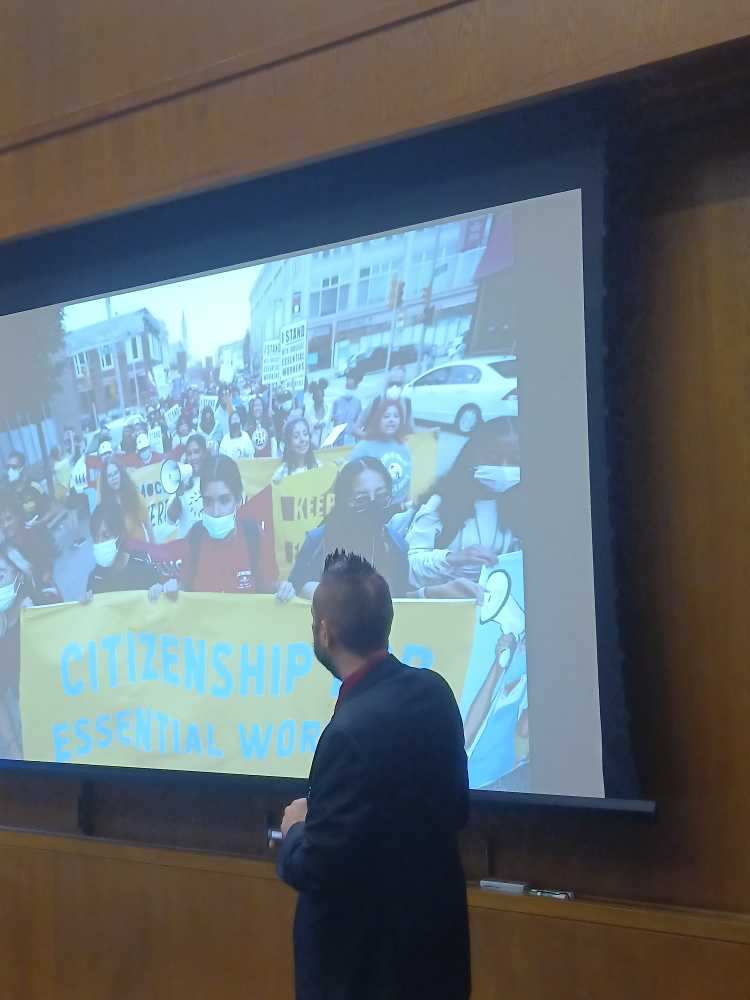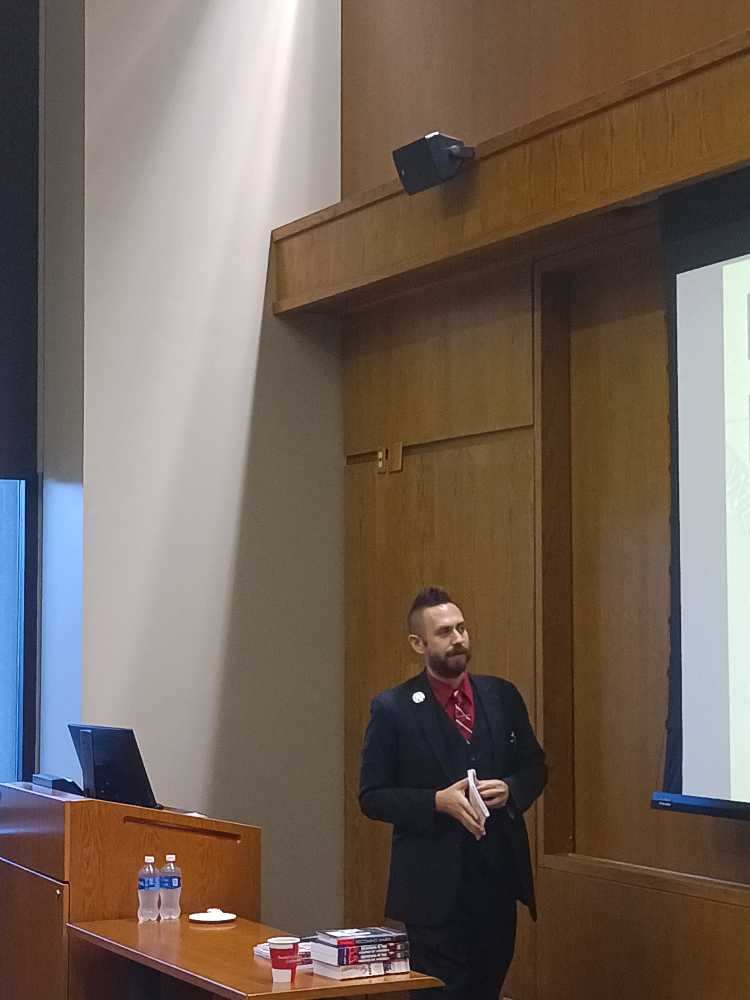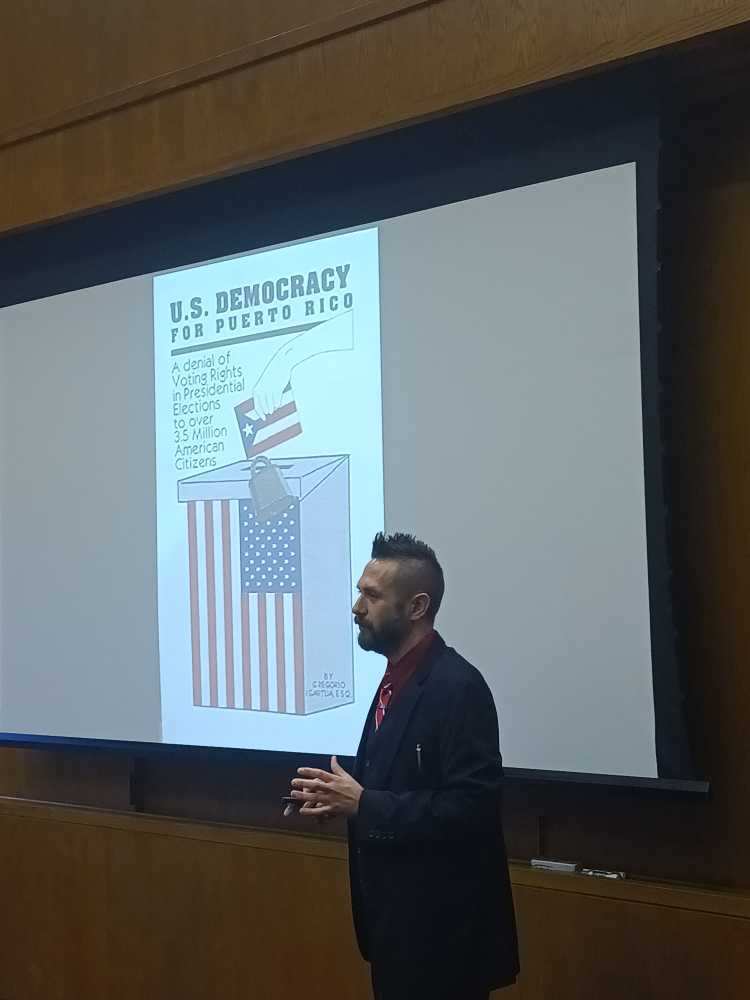The event was titled ‘The LatinX Giant’ and was Romero’s second appearance on campus that week. Previously, he held a talk about Latin stereotypes and how to break them.
Spoken word artist and renowned activist David A. Romero shared a vision of America’s future during a speaking engagement on campus. The Burbank-California native spoke passionately about the nation’s Latin roots, historic communities, and how the massive contribution of Latinos is statistically set to skyrocket over the next few decades.
While often marginalized and mislabeled, Latinos in the US have historic roots that date back to before the American Revolution. Yet despite these longstanding ties and about a trillion dollars in contributions to the modern American economy, members of these many communities driving the US’ continued growth and prosperity are regularly targeted by racist attacks. This, Romero stated, will only contribute to the awakening of the community’s true potential to have a transformative effect on American politics, culture, and economy.
“Just as during World War II after the attack on pearl harbor there was a Japanese admiral that said he feared all they did was wake a sleeping giant. One can say that in the racist attacks made by groups such as the Minutemen and political figures like Donald Trump that these attacks have had a similar effect in galvanizing our people in a way that will be profound,” Romero said.

The poet’s presentation covered a wide-range of interconnected topics that focused on the history, politics, and economics behind the Latin American population in the US. Photo: Ismael David Mujahid
By 2044, according to Romero, the Latino population in the US is estimated to be a quarter to as much as a third of the nation.
“Combined with other people of color in the US, for the first time in history we will outnumber Caucasians. We will finally become a minority majority nation and with that there will be major changes,” Romero said.
The poet highlighted a number of reasons for the massive population change, noting that it will be driven partly by declining birth rates and an upswing of deaths among Caucasian Americans. Additionally, births among minority groups is rising at a faster rate than previously predicted.

Attendees were given a number of wonderful performances by Romero, whose poetic style was both passionate and inspiring. Poems recited by the artist include ‘Undocumented Football’, ‘The Ladder’, and ‘Letters Across Borders.’ Photo: Ismael David Mujahid
In his presentation, Romero noted the popular misconception that most of that growth is coming by way of immigration. In fact, there are many historic Latin communities throughout the country, from the culturally influential Nuyoricans and Dominicans of Spanish Harlem to the large Chicano population in Illinois. Among many others, the Mexican population along the border states remains among the most populous for reasons that might surprise those unfamiliar with our nation’s history.
“For many of us, including members of our own family, we didn’t cross the border, the border crossed us. Many of these areas were once part of Mexico. There were roots that were planted by our ancestors that have endured. You’ll notice if you go to California, Los Angeles, San Diego- all these places have Spanish names that can be traced back to that,” Romero said.
In addition to discussing the connections between US-foreign policy and immigration from Central America, Romero also detailed the longstanding oppression and discrimination Latinos in America have faced. From lynchings to the disgusting ‘Greaser Act’ of 1855 and the equally notorious comments of Trump at the beginning of his 2016 candidacy, it is a long and bleak history other peoples of color in America can empathize with.
While the issues discussed felt legion, at times even insurmountable, Romero’s message was ultimately one of hope and solidarity. Attendees in Building 12 were treated to a number of passionate poetry performances throughout the presentation. Additionally, the activist also emphasized in the links between Brown v. Board of Education and the earlier example set by Mendez v. Westminster, the work of American legend Cesar Chavez with other groups, and the establishment of sisterly connections between towns throughout the US and their counterparts in Latin America.
Romero said, “One of the most incredible things I’ve seen was the first Spanish language commercial on ‘regular television’. This is happening more and more often and is something that will increase in popularity over the next few decades.”
In so many words, America’s future is diverse, Latin, and multicultural in ways that better honor the constitution than ever before.
Ismael David Mujahid,
Managing Editor.

